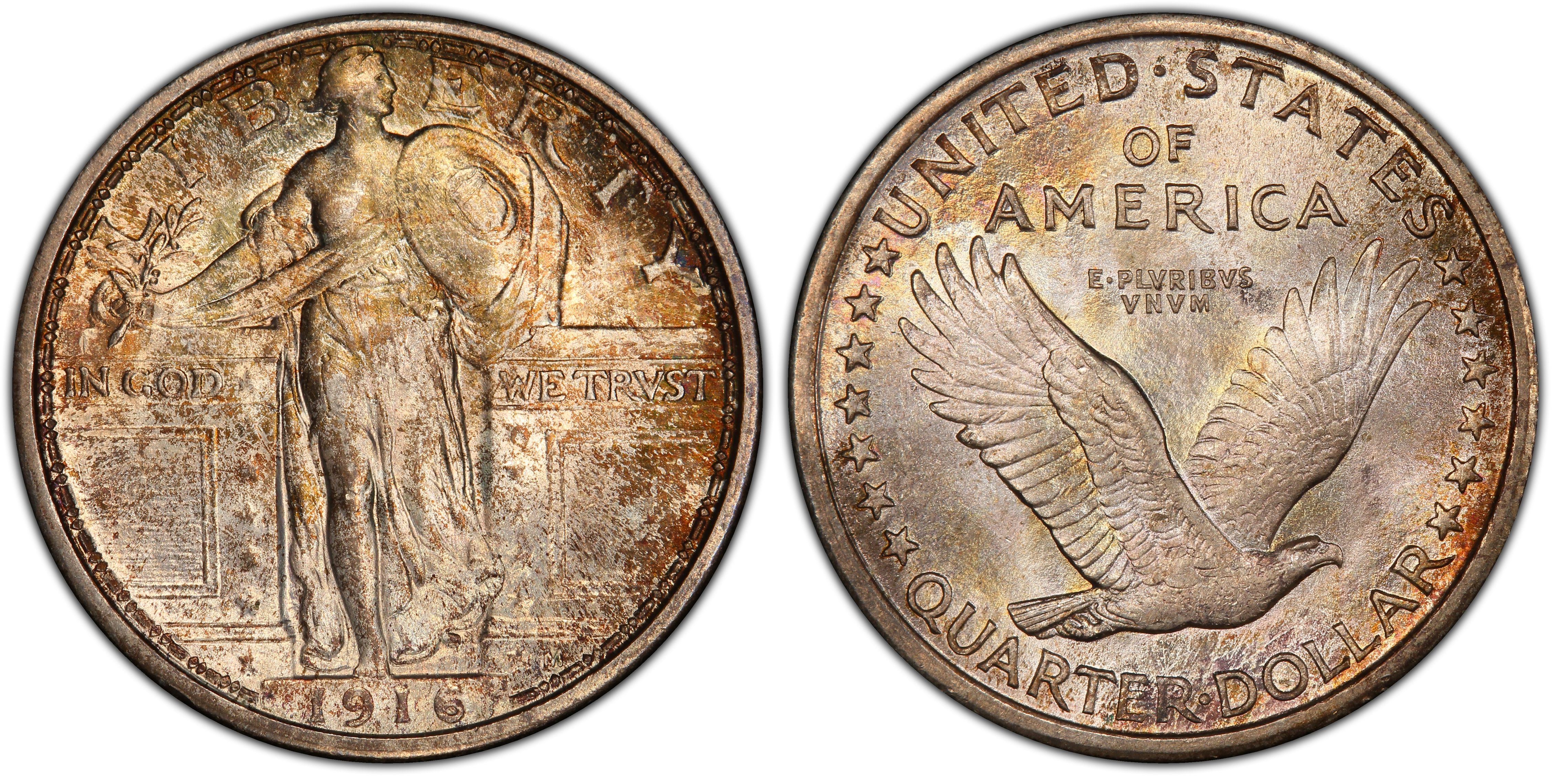Liberty Quarter
The United States Mint made the first Standing Liberty quarter in December of 1916. Before that, the Barber quarter had been in existence for more than 25 years from 1892 until 1916. This new design was part of the Treasury Department's overhaul of United States coinage designs for the dime, quarter and half dollar. 1871-S Seated Liberty Quarter, Briggs 1-A, Nice Fine+ Click picture for more info! $2,450.00: 1871-S Seated Liberty Quarter, Briggs 1-A, PCGS Gen. XF Detls, Clng Click picture to enlarge! $3,725.00: 1872-CC Seated Liberty Quarter, Briggs 1-A, AU+ or Better Details Click picture for more info! $19,500.00: 1872-CC Seated Liberty Quarter. 1917 Standing Liberty Quarter, Type 2, Fine $ 50.00 Add to cart; 1917-D Standing Liberty Quarter, Type 1, VF $ 110.00 Add to cart; 1917-S Standing Liberty Quarter, Type 1, Fine $ 98.00 Add to cart; 1920 Standing Liberty Quarter, AU58 $ 110.00 Add to cart; 1925 Standing Liberty Quarter, AU58 $ 98.00 Add to cart; 1926-S Standing Liberty Quarter.
Liberty Head $2.50 quarter eagle gold coins, also known as Coronet Type quarter eagles, were made from 1840 through 1907. These gold coins were struck by five different minting facilities over the course of their nearly 70-year run, including the Philadelphia mint, Charlotte mint, Dahlonega mint, New Orleans mint, and San Francisco mint.
The Standing Liberty Quarter was first minted in late 1916, although the first pieces would not be introduced into circulation until the following year. The coins would continue to be minted through 1930 amidst two modifications to the original design. The series has been considered one of prime numismatic interest. Assembling a complete collection is a challenge even in circulated grades due to one significant key date. In uncirculated condition, the completion of a set becomes an extremely difficult task, especially if coins are sought with fully struck devices, or the “Full Head” designation.

When the Barber design was slated to be replaced on the three silver denominations, a competition was declared to select the designs. For the quarter dollar, the design selected for the new type was created by Massachusetts sculptor Hermon A. MacNeil. The obverse of the coin features the standing figure of Liberty within the opening of a small gate adorned with thirteen stars. She holds a shield in her left hand and an olive branch in her right. The word LIBERTY appears above and the date below. The motto IN GOD WE TRUST is split over both sides of the gate. The original reverse design features an eagle in flight with seven stars to the left and six to the right. Beneath the eagle is the denomination QUARTER DOLLAR, with the remaining inscriptions UNITED STATES OF AMERICA and E PLURIBUS UNUM in the field above the eagle.


The original design described above, known as “Type 1”, was struck in 1916 and during the first few months of 1917. This version featured a depiction of Liberty with an exposed breast and according to numismatic myth there was a public outcry to cover her up. However, recent research of correspondence between MacNeil and the Mint has shown that the design was altered at the request of MacNeil, who felt that the design was not up to his usual standards.

Liberty Quarters Worth Money
The modified design for the Standing Liberty Quarters, known as “Type 2”, would be introduced during the latter part of 1917. The design was slightly strengthened on both sides, with two noted changes to the devices. On the obverse, Liberty now wears a suit of chain mail. Numismatic author Q. David Bowers has suggested that this might have been done to strengthen the military appearance of the design, which was introduced in the middle of the first World War. The reverse was altered as well, with the stars rearranged. Five stars were placed on either side of the eagle, with the remaining three stars positioned beneath.
Liberty Quarter 1979
A second modification to the design occurred in 1925, when the area containing the date was recessed. Prior to this, the date was placed in the same relief as the other parts of the design, which allowed it to be completely worn away in circulation. There were no further modifications to the design for the remainder of the series.